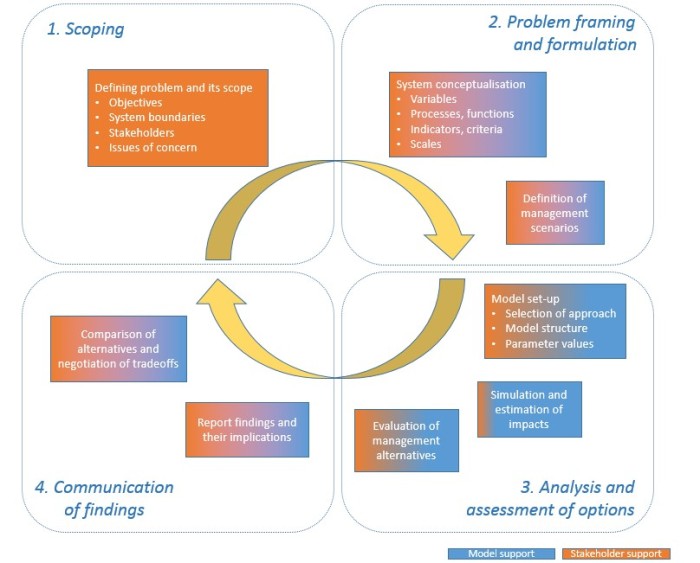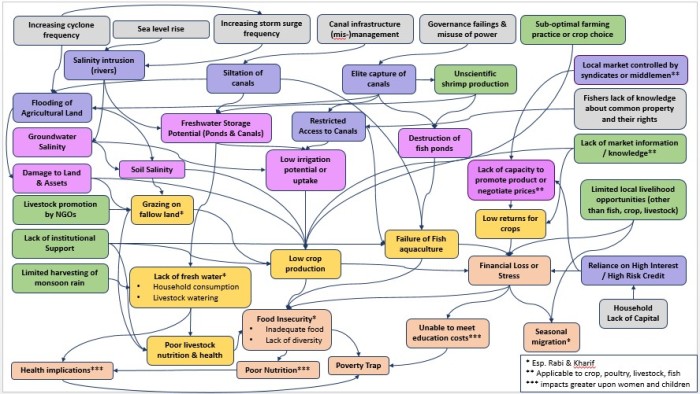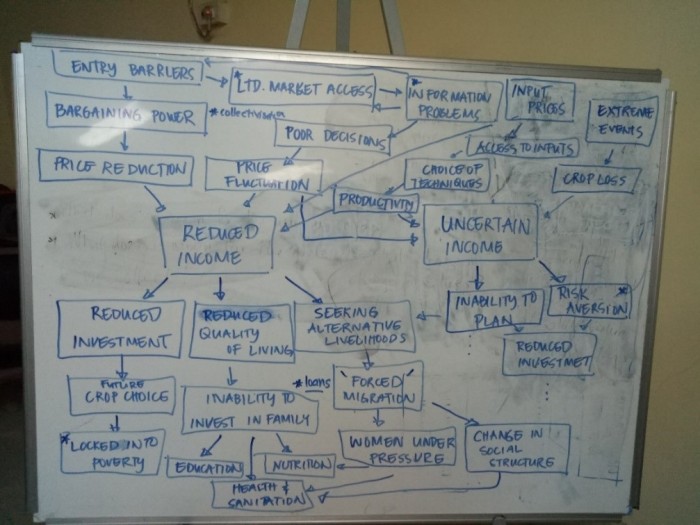Written by: Serena Hamilton (ECU) and Wendy Merritt (ANU)
Modelling is a way to systematically organize data, knowledge and assumptions for a particular purpose and context. For SIAGI, the broad purpose of integrated modelling is to improve our understanding of the risks and opportunities of agricultural intensification for marginalised households in our research communities. We are more concerned with the process of developing and using model(s) to gain insight than with the model itself.
The role of SIAGI integrated modelling is to provide a ‘big picture’ of the system and insight to the interrelationships between the different system components. In complex systems, a solution to one problem can potentially lead to new, and perhaps bigger, problems in the future or elsewhere. The integrated modelling process provides a structure to help think through such unintended consequences of interventions. It can also help detect leverage points, which are “places within a complex system where a small shift in one thing can produce big changes in everything” (Donella Meadows, 1999. Leverage Points: Places to Intervene in a System). One example of a leverage point is women empowerment, which has been demonstrated in many Indian communities to lead to improvements in household health and wellbeing, food security, and agricultural productivity. Identifying leverage points may provide community and stakeholders with insight on the suite of opportunities or interventions that could produce long-term, positive impacts across the communities.
To date, the focus of the SIAGI integrated modelling activities has been on ‘Scoping’ and ‘Problem framing and formulation’ phases. There has been an ongoing process of understanding and capturing the key system components and variables, and their linkages, as well as determining the scope of the model (e.g. What issues will it capture? What type of questions will the model address?). This has been a deliberately extended process to ensure the most appropriate model type and scope is selected; we are not forcing a square peg into a round hole.

In July 2016, we surveyed our project partners to get their early understanding of up to five key issues that affect the rural communities they work with. For each issue, we wanted to know who it affects and how, the drivers and flow-on effects, and factors that improve the capacity of households to avoid, adapt to or cope with negative impacts. By September 2016, we developed conceptual diagrams which highlighted the interrelated nature of the issues and the complex pathways that determine (e.g.) food security, financial and health outcomes.

This exercise highlighted the challenges that multidisciplinary teams face, namely differences in terminologies, theories, methods and/or research interests of members. In response, we developed a generic framework to facilitate people from various disciplines and backgrounds to structure issues, risks and opportunities in terms of driver-state-impact pathways (see https://www.mssanz.org.au/modsim2017/K5/hamilton.pdf).
The SIAGI team used the framework in November 2017 to capture the knowledge and learnings from the preceding year. We worked in five sub-groups – policy, market, environment & climate, nutrition, and social – and brainstormed driver-state-impact pathways around each of the themes. This capacity building exercise has helped the team to think in terms of systems, interconnections (including indirect drivers and impacts) and feedbacks.

The nature of the SIAGI project means a qualitative or least semi-quantitative modelling approach is most appropriate, particularly one that supports engagement with (or input from) the communities. We have trialled fuzzy cognitive mapping, a flexible approach that seems intuitive to the non-modelling members of the project team and capable of capturing the different issues at play at the SIAGI study villages. Currently, we are narrowing the scope of the integrated model(s) for each site.